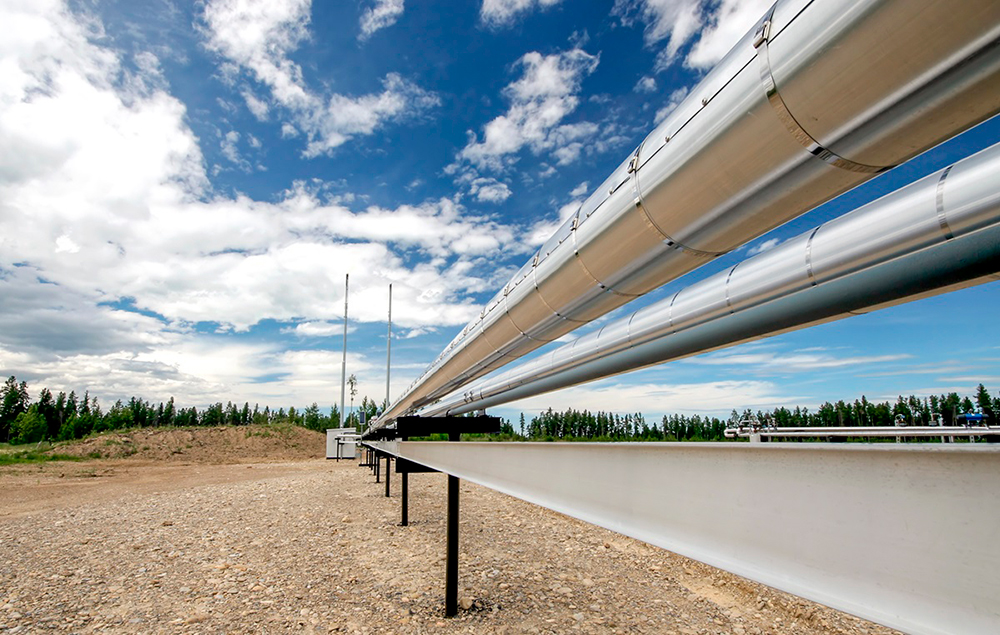The Challenge: How can we make the transport of petroleum products safer and more efficient?
The Research: Reduce friction in pipelines, drag on transport trucks
The Players: Arman Hemmati, assistant professor in mechanical engineering, and Arash Zargar, master's student in engineering
It's a fossil-fuelled world and society isn't quitting hydrocarbons any time soon. Which is why some researchers are applying their expertise to improving how hydrocarbons are produced, consumed and - in this case - transported.
"It is a fact that the standard of living of Canadians is high because we use a lot of energy. So, we can't just stop that right away to fight climate change, to reduce emissions," says Arman Hemmati, an assistant professor of mechanical engineering. "What we have to do, however, is make a responsible use of those resources."
One way is to make the transportation of fossil fuels more efficient. To that end, Hemmati's team is targeting two invisible enemies: friction and drag.
Better Pipelines
Pipelines work by pushing fluid forward, using pressure introduced from above-ground pumping stations. As the fluid loses acceleration, the next pumping station delivers another shot of pressure. But that process gets a lot stickier, so to speak, when the substance is bitumen.
Even when diluted, the viscous substance is filled with silica sand and clay particles, which create friction that slowly wears down the pipeline, especially along the bottom. Regular (and expensive) cleaning and maintenance are required to prevent pipeline failure - and leaks.
Hemmati's team is looking at a process that could push bitumen off the walls of the pipe and force it to the middle, where it could flow more freely. Versions of this concept, called vortex generators, are currently in use but they are costly and corrode easily. Hemmati's idea involves adding internal cross-sections to the pipes with projections that almost look like teeth. These ridges would shape the fluid so most of it spirals through the middle, reducing the impact - and wear - on the walls.
Reduced friction means pumping stations won't have to work as hard, which in turn means they'll use less energy and limit corrosion damage. The result would be less maintenance and a reduced risk of leaks. Hemmati has received a $100,000 Alberta government grant to continue the research. "I think that would be one of the ways that we are going to change the view of pipelines. And that will have implications not only in Alberta, not only in Canada, but worldwide," he says.
Reducing Truck Emissions
The same broad principles are being applied to an above-ground challenge that can be a real drag when it comes to transporting fuel by truck: the wind.
Gusts hitting the broadside of a semi-trailer truck create a corresponding low-pressure dead zone on the other side, which in turn creates a stability problem, says Arash Zargar, a grad student working with Hemmati. The driver responds by wrestling the vehicle to keep control, which uses more fuel. Says Hemmati: "If we can reduce the drag, we can reduce the amount of emissions." Heavy-duty diesel vehicles are responsible for about five per cent of greenhouse gas emissions in Canada.
The concept is straightforward: install simple modifications on the trailer, such as flaps or teeth, to deflect the wind and increase stability. The challenge is to develop a computer simulation method that effectively and efficiently predicts the impact of wind flow when the modifications are introduced, says Zargar.
In the end, any modifications must be affordable to install and proven to reduce a business's operating costs, says Hemmati. A reduction in emissions is just icing on the cake.
-with files from Kenneth Tam

We at New Trail welcome your comments. Robust debate and criticism are encouraged, provided it is respectful. We reserve the right to reject comments, images or links that attack ethnicity, nationality, religion, gender or sexual orientation; that include offensive language, threats, spam; are fraudulent or defamatory; infringe on copyright or trademarks; and that just generally aren’t very nice. Discussion is monitored and violation of these guidelines will result in comments being disabled.